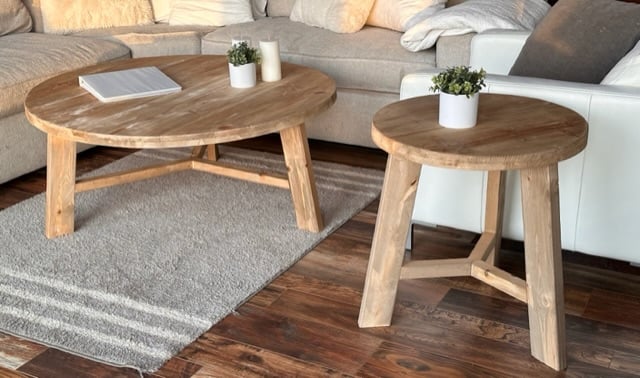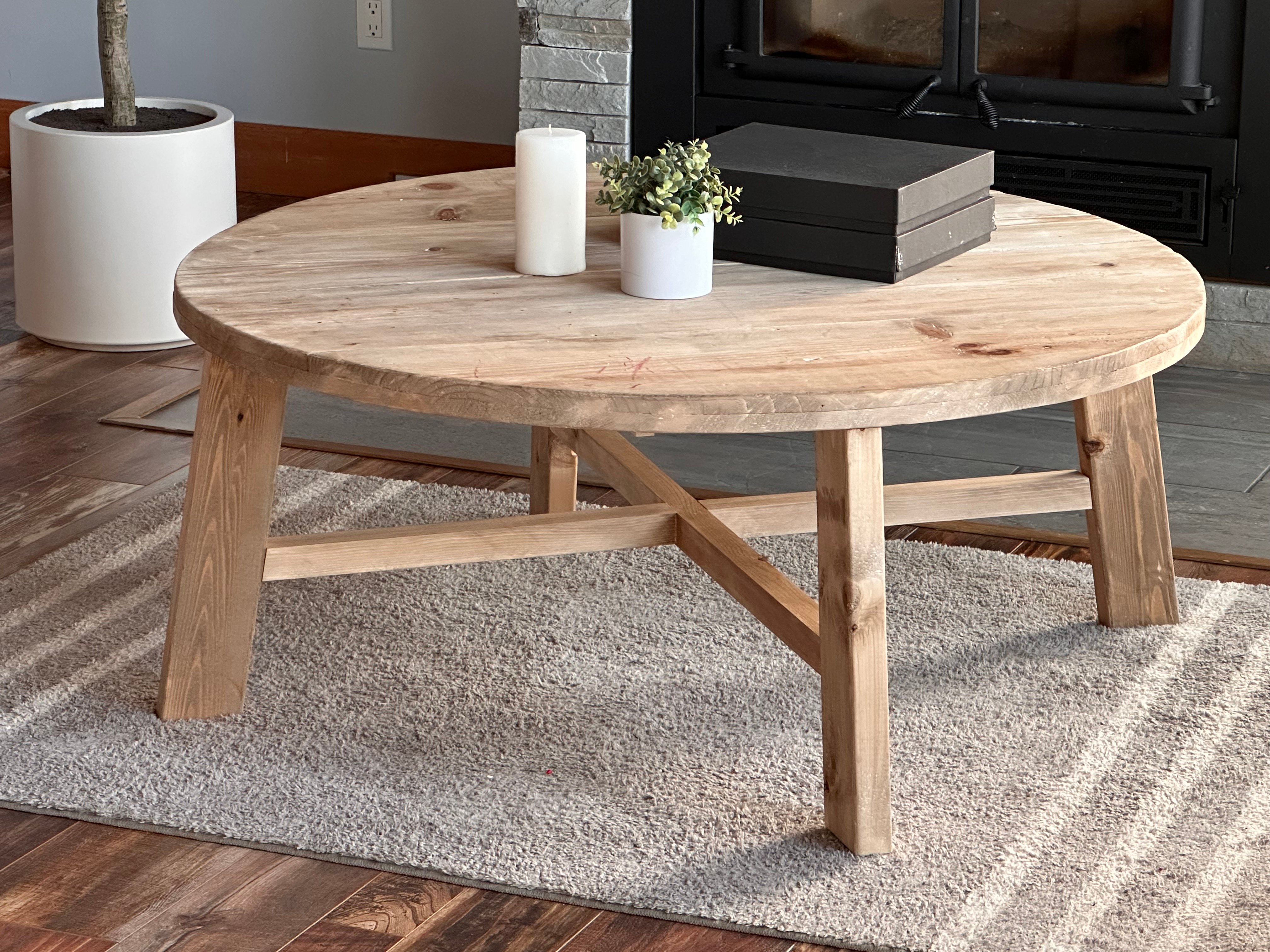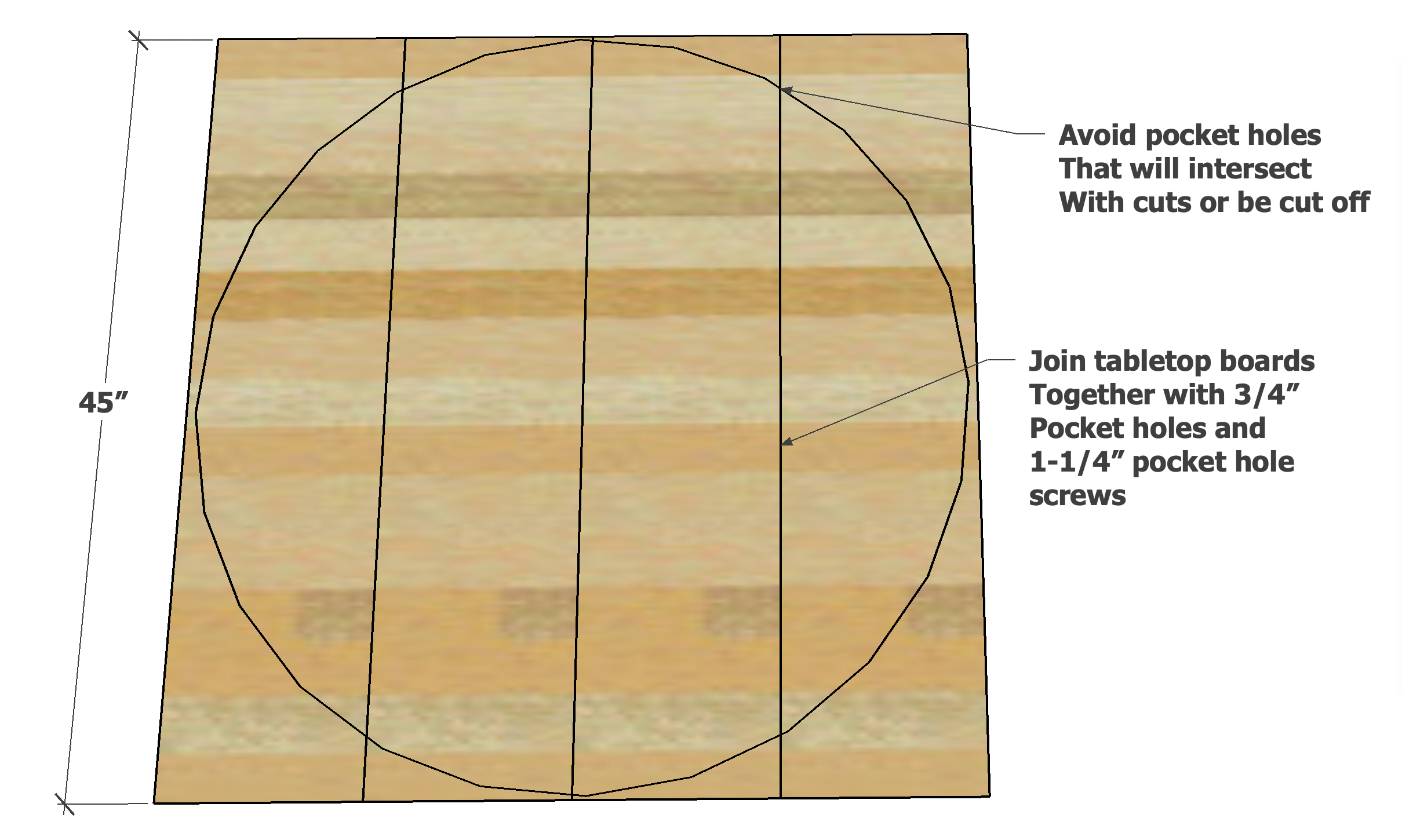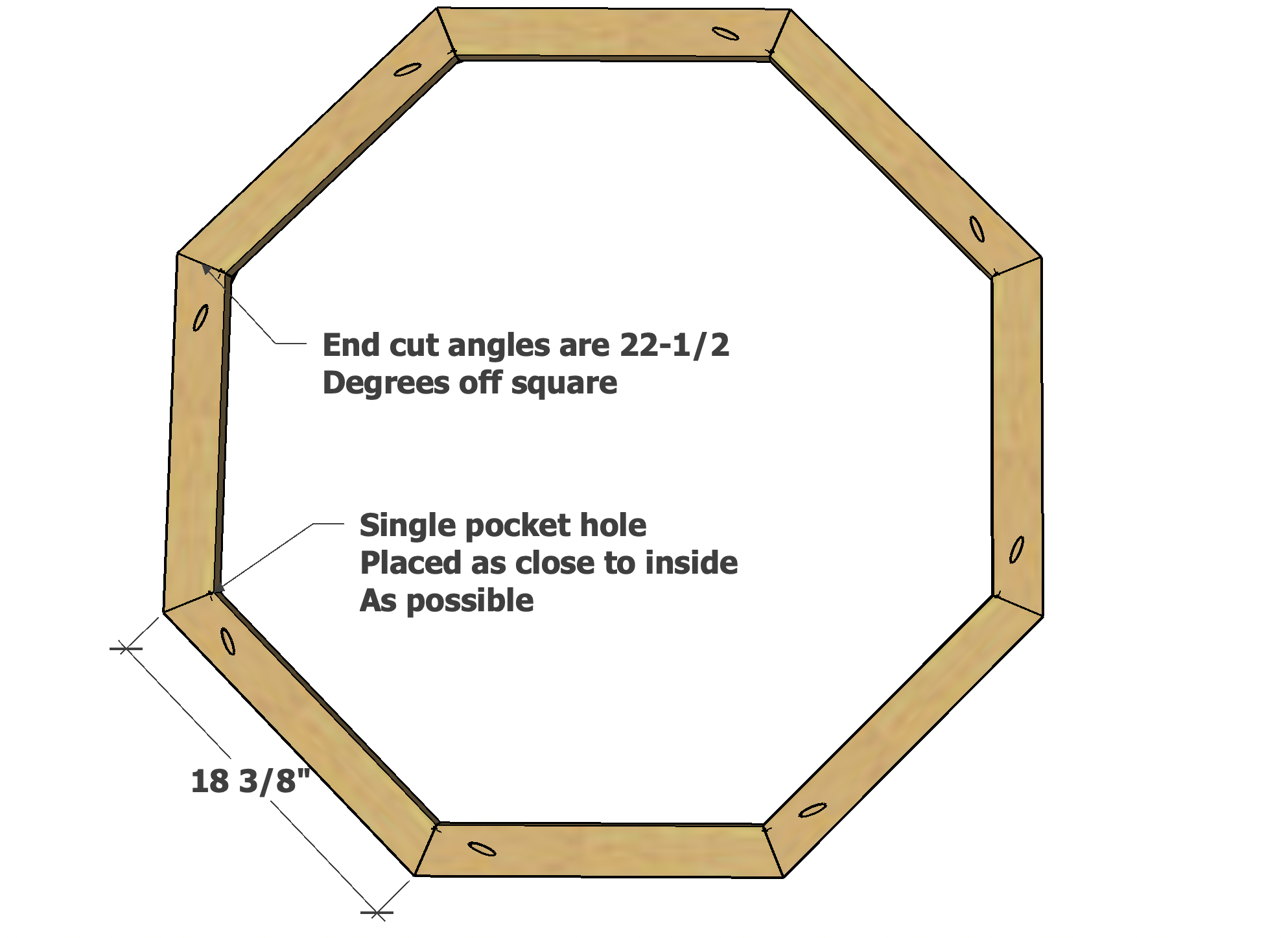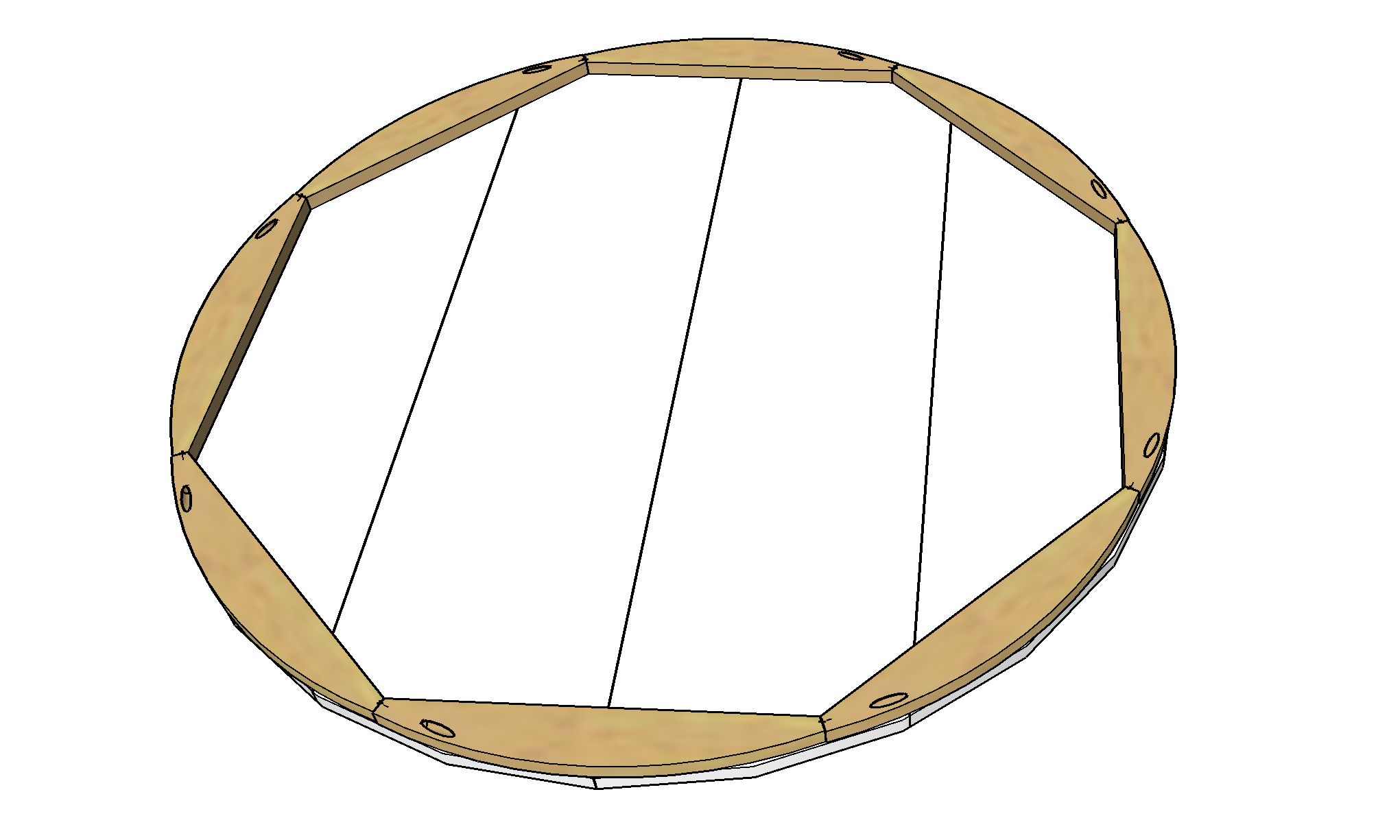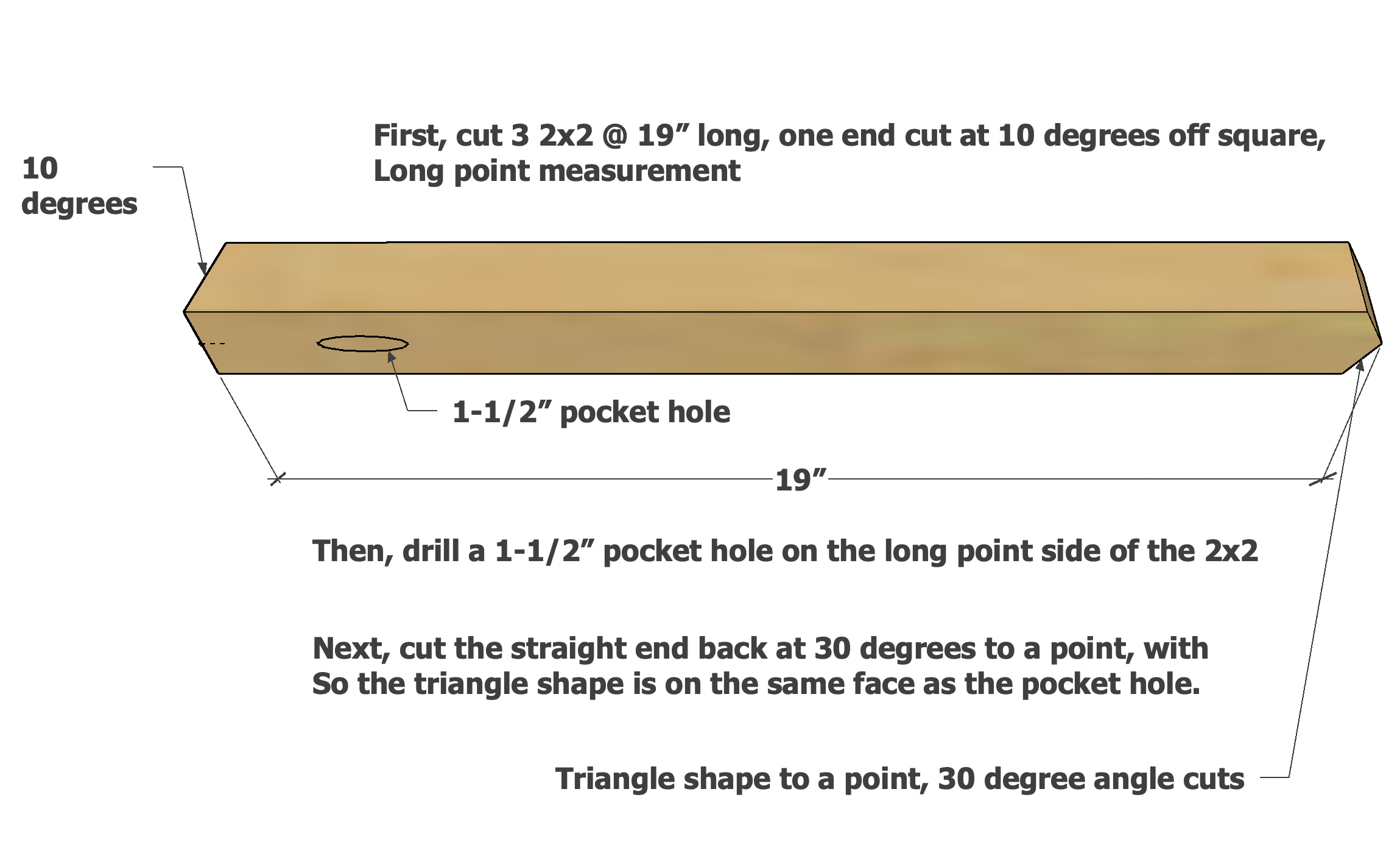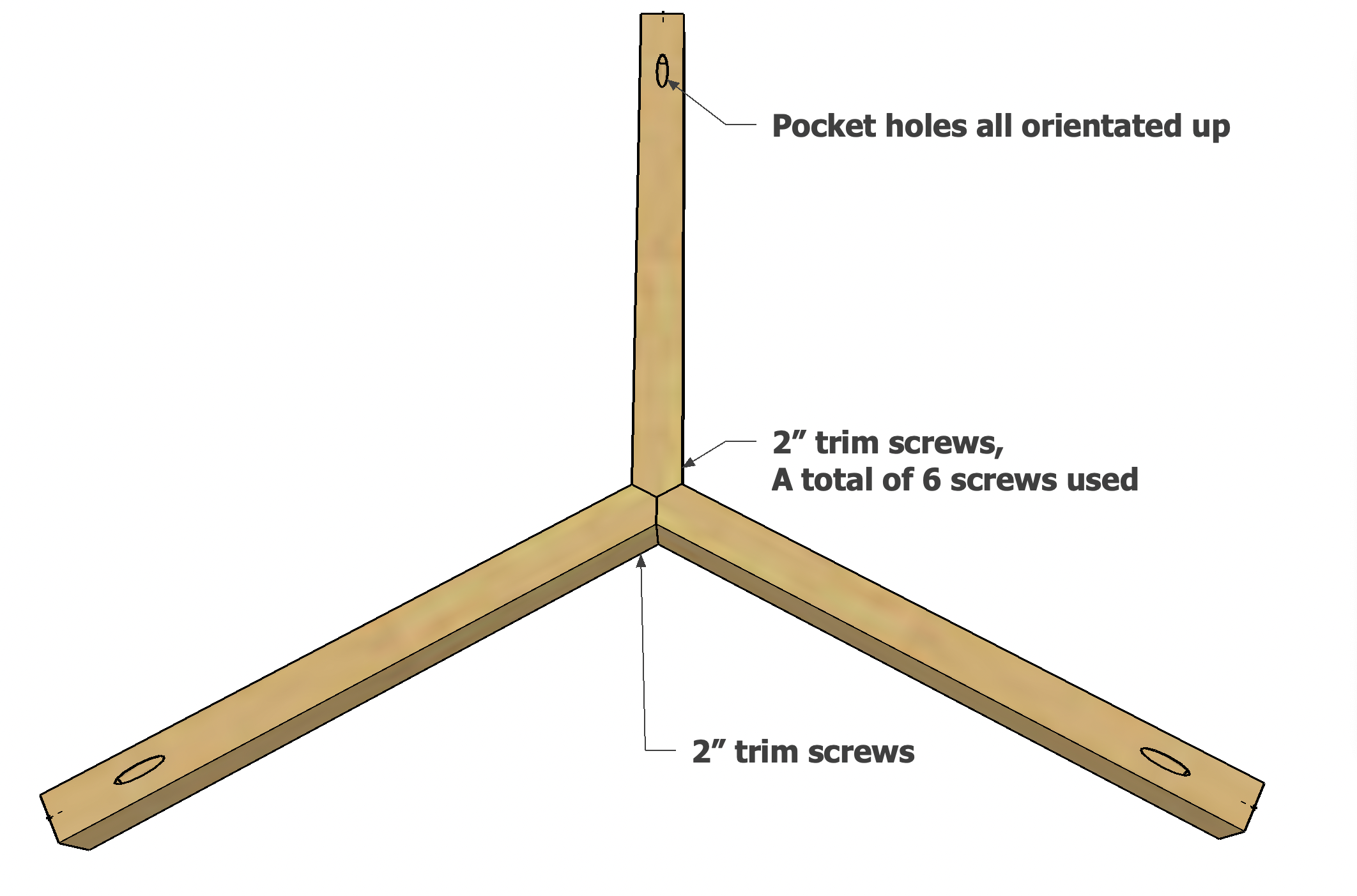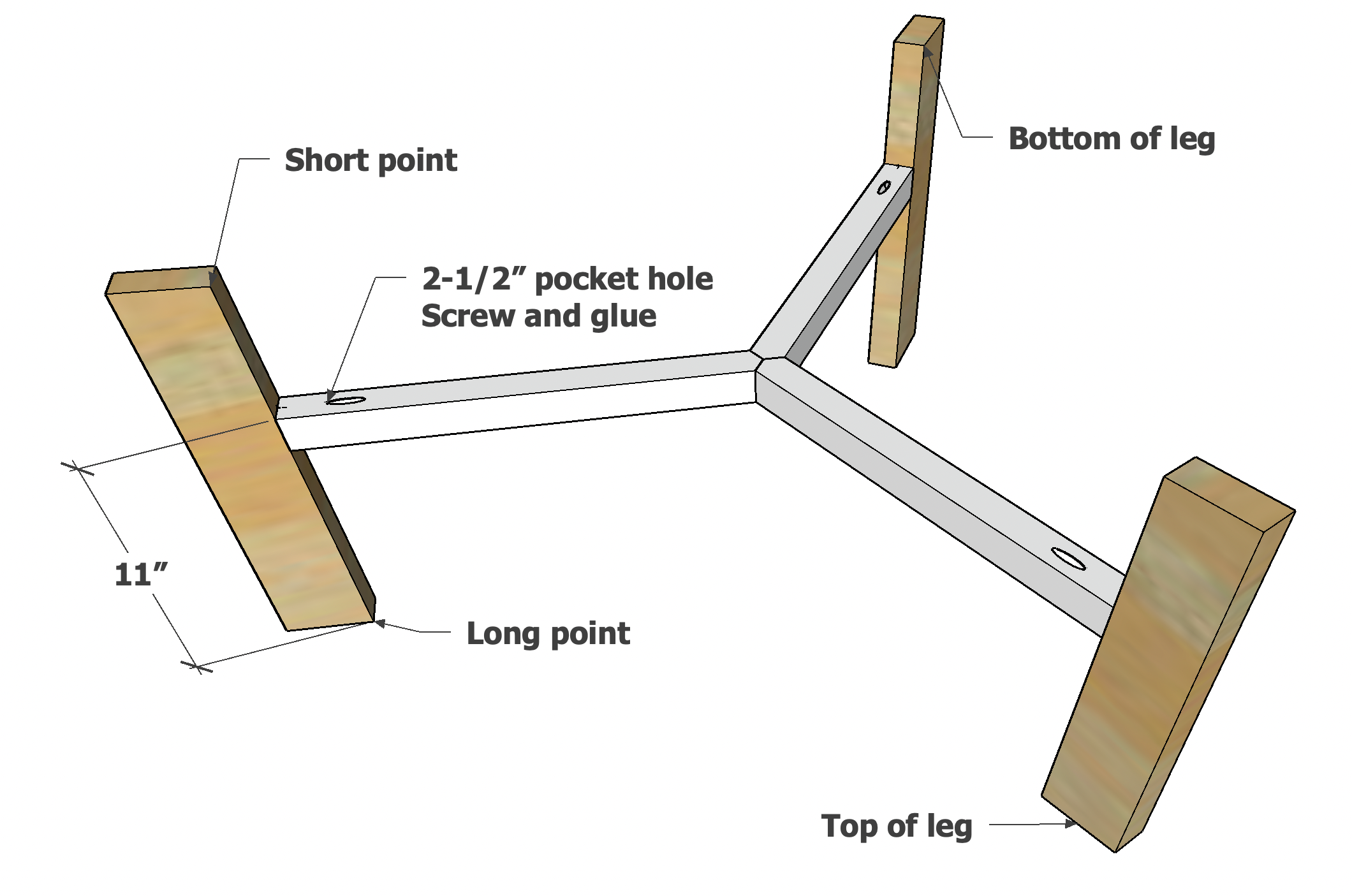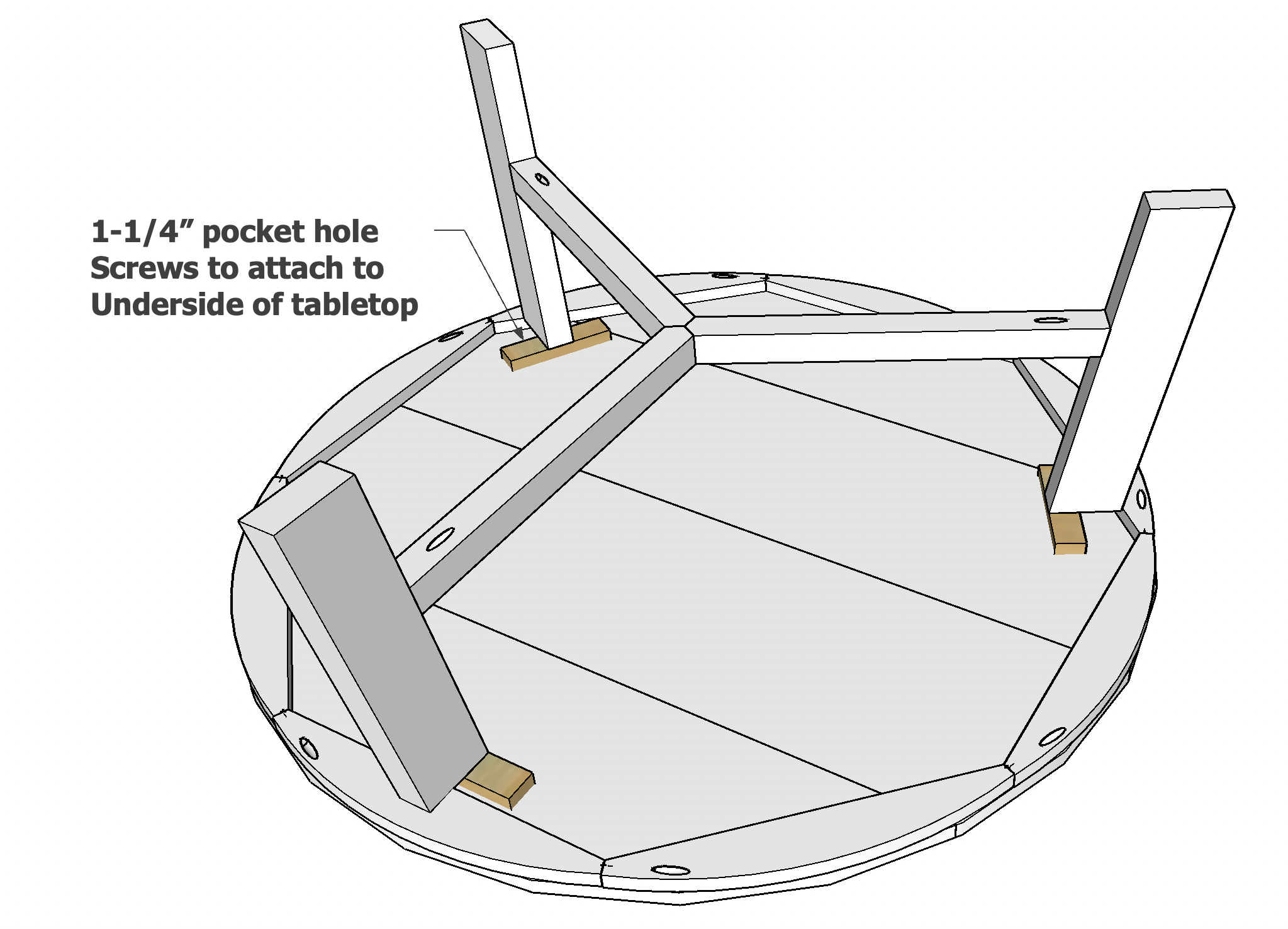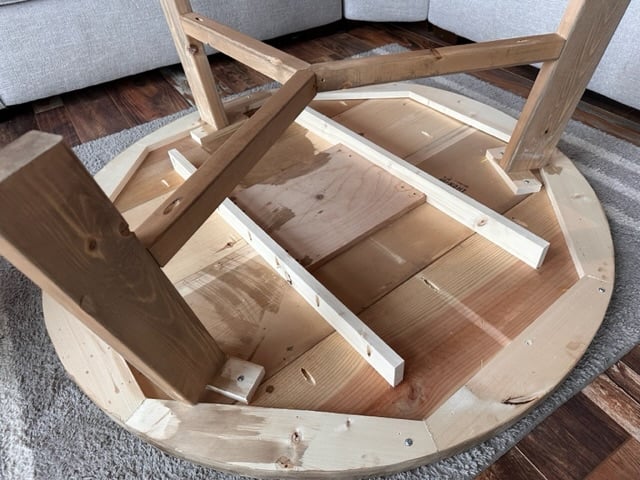
Free plans to build your own rustic farmhouse round coffee table. With a pine planked top and splayed legs, this beautiful, lightweight coffee table adds character and functionality to your living space. Free plans include video tutorial, step by step diagrams and shopping list, all built using minimal tools and simple techniques.
Pin For Later!
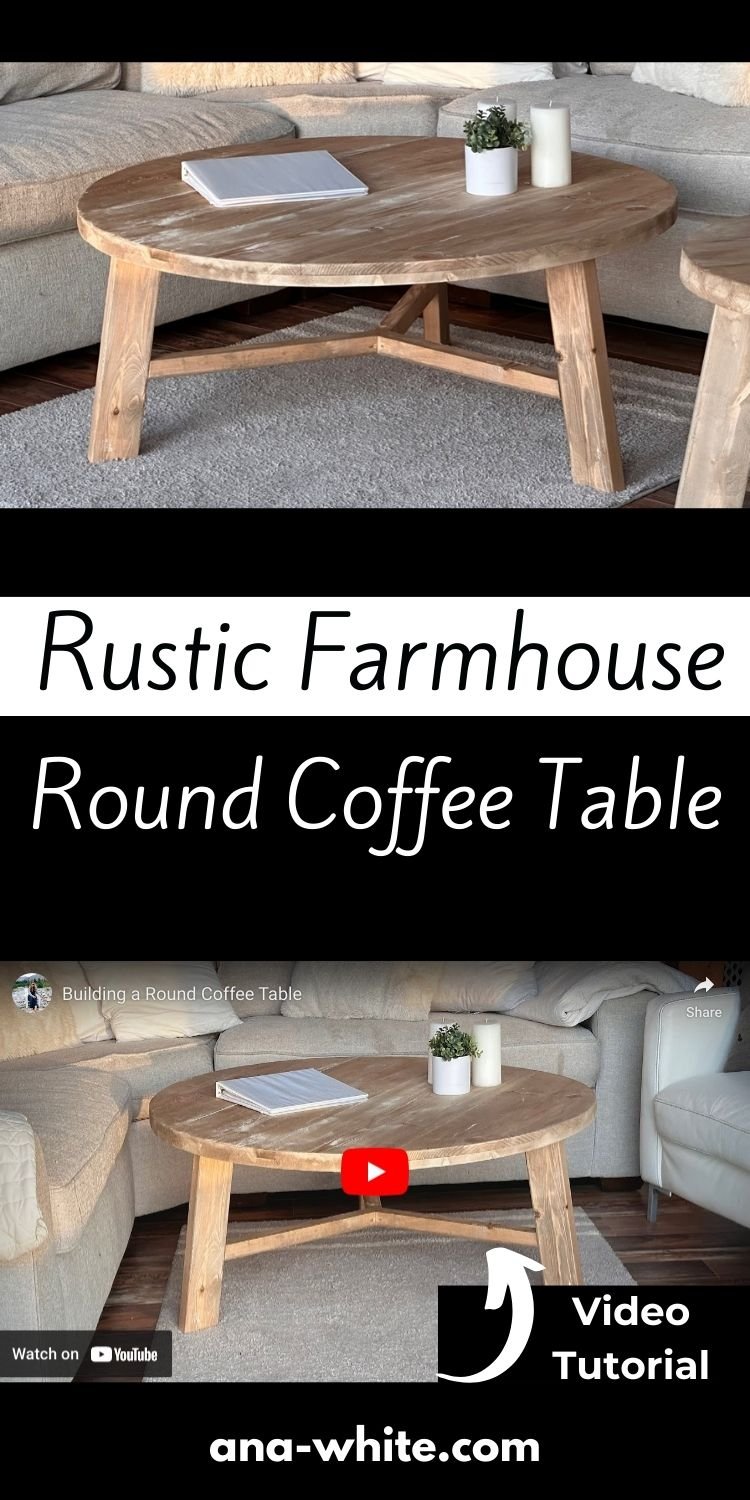
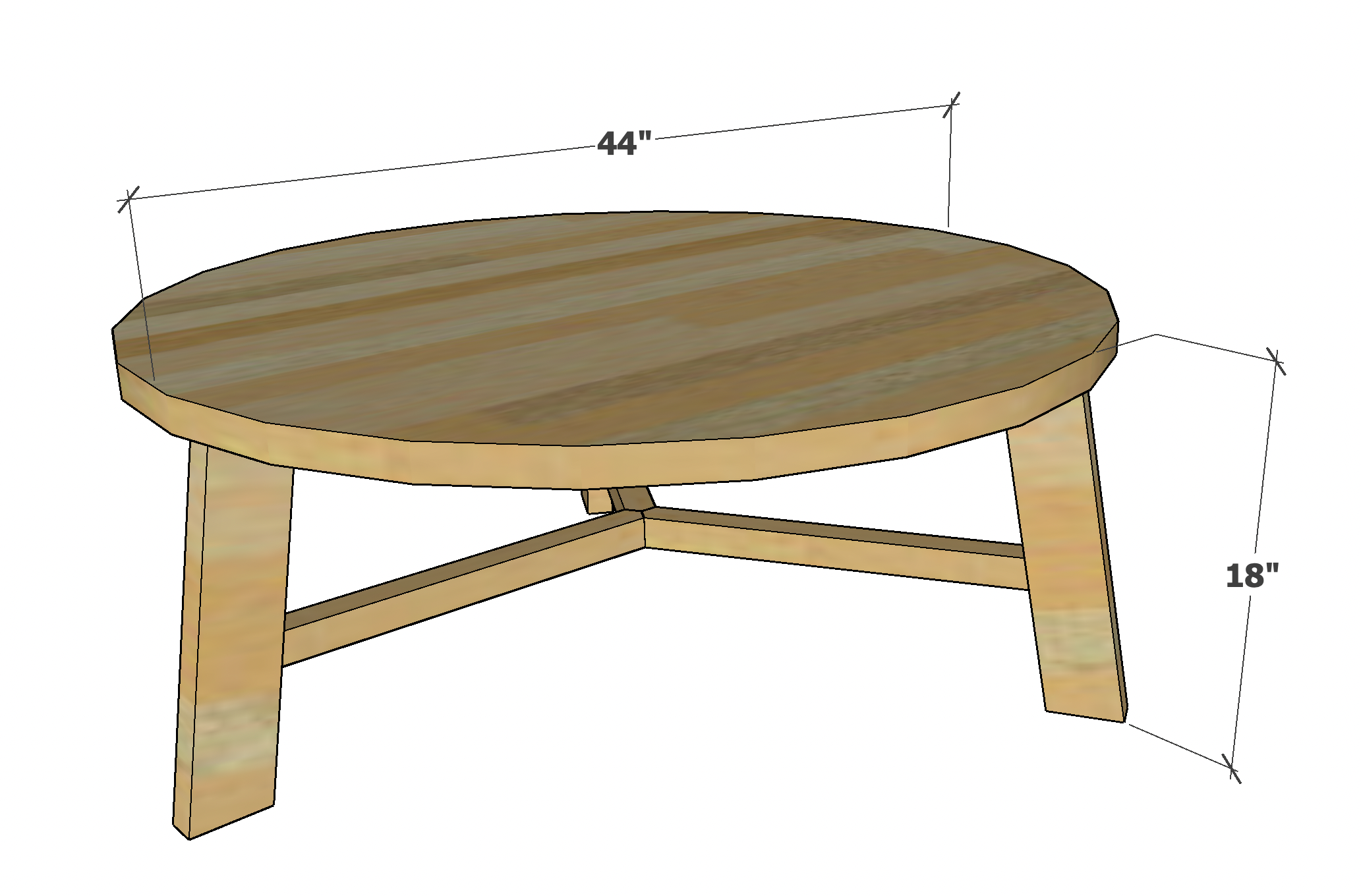
Preparation
- 2 - 1x12 @ 8 feet long
- 2 - 1x6 @ 8 feet long
- 1 - 2x4 @ 4 feet long
- 1 - 2x2 @ 6 feet long
- 12" of 1x2 boards
- 1-1/4" pocket hole screws (about 25 needed)
- 2-1/2" pocket hole screws (3 needed)
- 2" trim screws (about 20 needed)
- 1-1/4" brad nails
- wood glue
- sand paper
- wood filler
- Stain and topcoat as desired
- 4 - 1x12 @ 48" long
- 8 - 1x6 @ 18-3/8" - both ends cut at 22-1/2 degrees off square, ends NOT parallel, long point to long point measurement
- 3 - 2x2 @ 19" - one end cut at 10 degrees off square, long point measurement
- 3 - 2x4 @ 16-1/2" - both ends cut at 10 degrees off square, ends ARE parallel, long point to short point measurement
- 3 - 1x2 @ 4" long
For long term durability and more professional results, I recommend using a pocket hole joinery system for wood joints. Here is a video with tips for using a pocket hole jig:
Instructions
Step 1
Step 2
Step 3
Step 4
Cut the tabletop down into a circle. Here's how to make the circle jig.
Step 5
Prepare the three stretcher pieces from the 2x2s.
First, cut the 2x2s as directed in the cut list.
On the angled end, long point side, drill a 1-1/2" pocket hole.
On the opposite end, cut to a point, with saw set at 30 degrees off square.
It is easiest to mark first the pocket holes and cuts, to avoid mistakes.
Do this on all three of the 2x2 stretcher pieces.
Step 6
Step 7
Attach the triangle stretcher piece to the 2x4 legs with glue and 2-1/2" pocket hole screws.
This step is a little challenging to balance and drill - an extra hand would be helpful here.
The 2x2s are attached to the 2x4 legs 6" up from the bottom of the 2x4 leg. The diagram here is shown upside down.
Step 8
Set the coffee table base on a flat, level surface and make sure it sits evenly before glue dries up.
Attach 1x2 scrap wood pieces on the insides as shown in the diagrams, for attaching to the tabletop in next step, with two 2" screws and wood glue per leg.
TIP: Angle the trim screws in different directions as you drive them, so the joint is less likely to pivot.
Step 9
I used a wire brush attachement on an angle grinder to create grain texture. Then I lightly sanded with 120 grit sandpaper.
After that dried, I added a clear poly coat. I used a fine paint brush.


